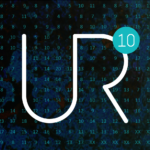
Build-your-own risk map: Hands-on training series to create interactive maps for communicating risk
February 14, 2020 6:29 am Leave a comment
Build-your-own risk map: Hands-on training series to create interactive maps for communicating risk
use · Data · Emerging technologies · risk communication ·nature-based solutions
Are you inspired by the use of interactive maps and data visualizations to communicate information about natural hazards, vulnerability, and risk? Want to develop skills to build similar tools yourself? Join us for a series of hands-on trainings designed to take you through the steps from data to design to finished creation. We will cover working with several sources of geospatial data, creating custom styled maps, adding interactivity to a web map with Mapbox, and an introduction to other tools for creating data dashboards (Microsoft PowerBI and Tableau). The primary objective of this training series is to equip members of the UR community with practical tools and skills for turning risk data and geospatial data into effective map-based data visualizations.
Participants will leave the trainings with the ability to create their own simple interactive web maps and/or dashboards and with greater awareness of what is possible with interactive map tools and what is required to create them. This series of hands-on trainings is intended to pair well with a) the Mapbox-led technical session on geospatial data sources and their uses and b) the proposed side event on user-centered design for risk data visualizations (which will cover more of the design and analysis aspects of creating a data visualization). We propose to structure the applied content in a series of three trainings that may be taken all together or individually in order to accommodate differences in participant interest and schedules.
Part 1 – Preparing data and base map (with prepared sample data from several sources)
Part 2 – Custom interactive visualizations with Mapbox (interactivity, scrolling storytelling template)
Part 3 – Quick visualization dashboards with Microsoft PowerBI and Tableau Participants will receive follow-up communications so they can maximize the practical application of the training content to their work. Training participants will also have opportunities to build connections with various teams that build map-based data visualizations regularly and discuss ideas and needs.
This will be a highly-engaging series of trainings. Participants will work through project tasks step-by-step on their own laptops with support from the trainers and assistants. In addition, each training will include some time for discussion and sharing of ideas for how participants would like to apply what they learn.
Organizer: Mapbox & Kontinentalist
